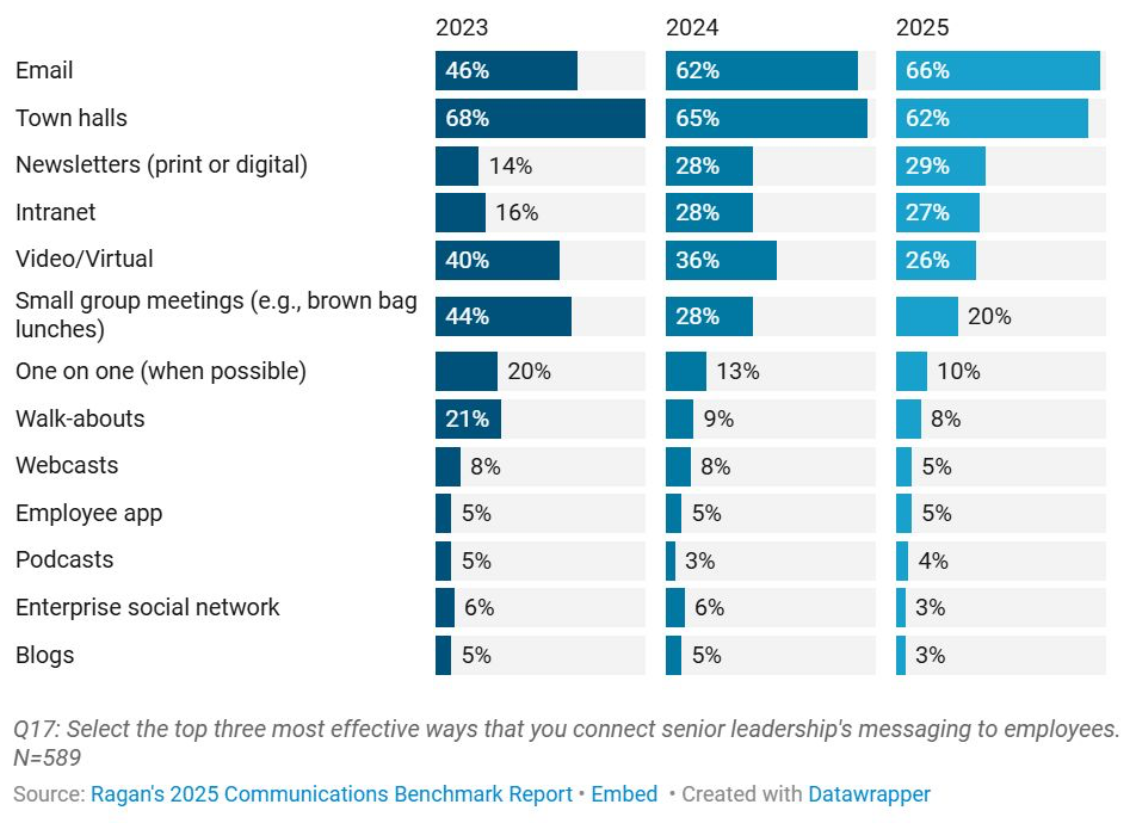Internal Communications for Startups: Why It Matters More Than You Think
One of the first questions we ask in our brand scan process (our 360º look at how your communications, market position, and internal alignment stack up) is deceptively simple:
What's the state of your internal communications?
When we ask this in founder interviews or exec team roundtables, we often get a puzzled look. Isn't internal comms… HR's job? What does that have to do with marketing? Or branding?
Our answer? Everything.
Your brand isn't just your logo, your font, or the language on your website. It's your ethos. It's your culture. It's the set of ideas your team carries into every town hall, investor call, product roadmap, and customer conversation. If that message isn't clearly defined, reinforced, and believed across the company, it shows. And in early-stage startups, especially in fast-moving sectors like clean energy, it can derail even the strongest product or team.
Internal misalignment is a brand problem.
CEOs are often clear on the company's mission and direction, but that clarity rarely makes it past the exec team. What seems obvious to the CEO is often murky to a direct report. And if it's murky there, it's invisible further down.
If your internal comms aren't consistent and compelling, your messaging doesn't stick. Your culture doesn't scale. And your employees can't serve as messengers, because they don't know what to say.
So what do we recommend?
We work with early-stage startups across cleantech and deep tech, and here's the advice we give every one of them:
01 | Repeat your messaging. Then repeat it, again.
Startups pivot. Markets shift. Policy evolves. That's not a bad thing; it's part of what makes working at an early-stage company fun. But if your external story changes, your internal messaging must change with it. Don't assume one Slack post or town hall will do it. Send an email. Host a Q&A. Give managers talking points. When you change course, bring your team along with you.
02 | Match the message to the medium.
Recent research shows that while employees used to prefer hearing company updates in town halls, email is now their top channel of choice. Our recommendation? Use both. Don't treat communication as a one-and-done event. Introduce an idea via email. Reinforce it live. Follow up in Slack or 1:1s. Let it breathe and then bring it back. It takes time for a message to stick.
bar chart from Ragan research
03 | Equip your employees to be brand ambassadors.
Every employee—yes, even your newest hire—is a potential touchpoint with a customer, investor, or future teammate. Give them the tools to represent the company well. Share messaging frameworks. Create a simple internal doc or Notion page with approved language and topline goals. Don't script, but do support.
04 | Tailor communication to the moment.
Not all updates are created equal. Launching a new product? Culture-building? Managing a crisis? Each situation demands a different comms approach. A culture moment might call for a newsletter and a casual town hall. A crisis? You need tight, clear messaging distributed simultaneously across functions. Even your most junior team members need context. That CS rep you hired last month? They're likely the one fielding customer questions before anyone else, and they can't represent the company if they don't know what's going on. If they don't have the correct information, your message breaks before it ever leaves the building.
05 | Connect the dots between mission and day-to-day.
Startups are hard. Your team is working long hours, often under extreme uncertainty. If they don't understand why the work matters, they won't stick around. Take the time to connect daily execution with the broader mission. Share wins. Reinforce goals. Build belief. That's how you create alignment, motivation, and staying power.
Clear internal communication drives performance.
When your team understands where you're going, why it matters, and how they fit in, you move faster, execute more effectively, and keep people engaged through the messy (but rewarding!) work of scaling.
That's why we bake internal comms into every brand scan. It's one of the fastest ways to improve company performance, and one of the most overlooked.
Need help getting everyone on the same page? Let's talk.

